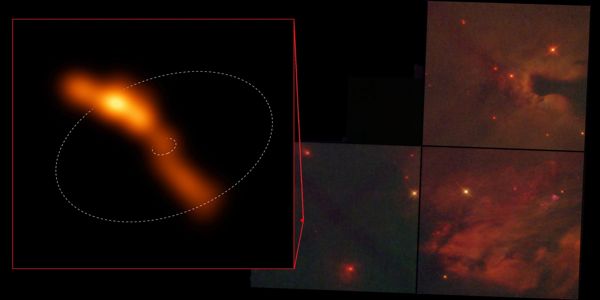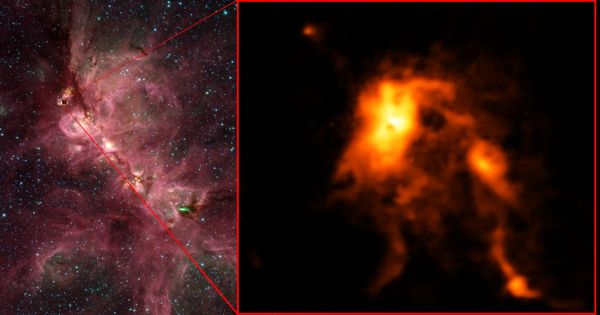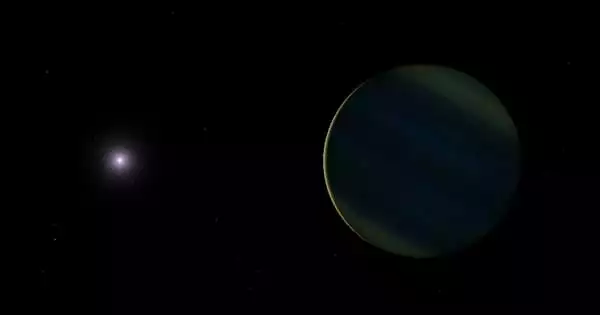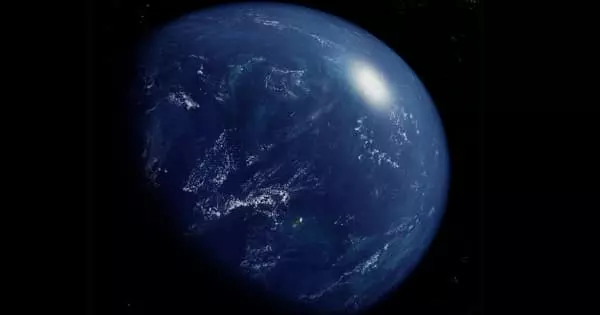Astronomers studying high-speed matter jets emitted by giant young stars that are still forming discover a significant difference between those jets and those emitted by younger stars with less mass. According to a highly detailed VLA image, the jets of material ejected by young stars much more massive than the Sun may be very different from those ejected by less-massive young stars.
Astronomers studying the fast-moving jet of material ejected by a massive young star that is still forming discovered a significant difference between that jet and those ejected by less massive young stars. The scientists made the discovery by using the Karl G. Jansky Very Large Array (VLA) of the National Science Foundation in the United States to create the most detailed image yet of the inner region of such a jet coming from a massive young star.
Young stars, both low and high mass, propel jets outward perpendicular to a disk of material closely orbiting the star. These jets are narrowed, or focused, relatively tightly near the star in stars with masses similar to the Sun, a process known as collimation. Because most high-mass protostars are farther away, studying the regions near them has been more difficult, and astronomers were unsure if this was the case with them.
A team of astronomers have discovered a distinct difference between the material ejected by massive protostars and less-massive protostars.
To investigate potential differences, the researchers looked at Cep A HW2, a massive protostar in the Cepheus constellation about 2,300 light-years away from Earth. Cep A HW2, an intergalactic Goliath, is estimated to be ten times the mass of the Sun when fully developed.
A team of scientists observed Cep A HW2, a massive protostar located about 2,300 light-years from Earth in the constellation Cepheus. Cep A HW2 is expected to evolve into a new star ten times the mass of the Sun. The new VLA images revealed the finest detail ever seen in such an object, providing astronomers with their first view of the jet’s innermost portion, which is roughly the length of the Solar System.
“What we saw is very different from what is usually seen in low-mass star jets,” said Adriana Rodriguez-Kamenetzky of Mexico’s National Autonomous University (UNAM).

Observations of lower-mass protostar jets have revealed that they are collimated as close to the star as a few times the Earth-Sun distance.
“We see not a single jet, but two things in Cep A HW2 — a wide-angle wind originating close to the star, then a highly-collimated jet some distance away,” said Alberto Sanna of Italy’s Osservatorio Astronomico di Cagliari (INAF). The collimated jet begins at a distance from the star equivalent to the distance between the Sun and Uranus or Neptune.
The discovery raises two main possibilities, the astronomers said.
First, the same mechanism could be at work in both high-mass and low-mass protostars, but the collimation distance could be determined by mass, with more massive systems occurring farther away. The second possibility is that high-mass stars produce only wide-angle wind, with collimation occurring only when physical conditions around the star restrict the flow.
“That case would point to a significant difference in the mechanisms at work in protostars of different masses,” said Carlos Carrasco-Gonzalez, co-leader of the research at UNAM. “Answering this question is critical to understanding how stars of all masses form,” he continued.
Carrasco-Gonzalez and his colleagues published their results in the Astrophysical Journal. The National Radio Astronomy Observatory is a National Science Foundation facility run by Associated Universities, Inc. under a cooperative agreement.
According to the study’s leader, Carlos Carrasco-Gonzalez, “the discovery raises two major possibilities.” First, the same mechanism could be at work in both high-mass and low-mass protostars, but the collimation distance could be determined by mass, with more massive systems occurring farther away.
The second possibility is that high-mass stars produce only wide-angle wind, with collimation occurring only when physical conditions around the star restrict the flow. That case would indicate a significant difference in the mechanisms at work in protostars of varying masses. The answer to this question is critical to understanding how stars of various masses form.
















